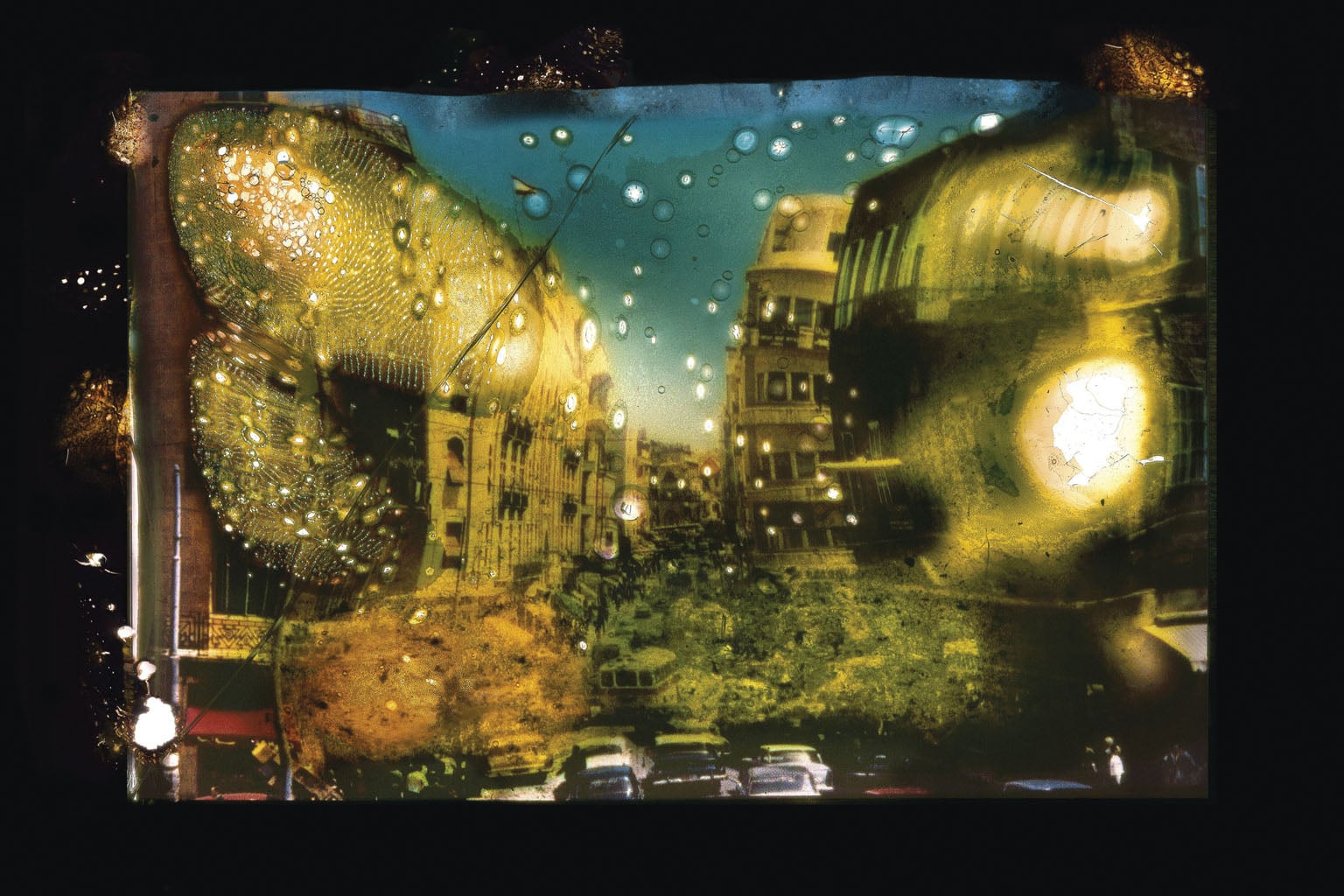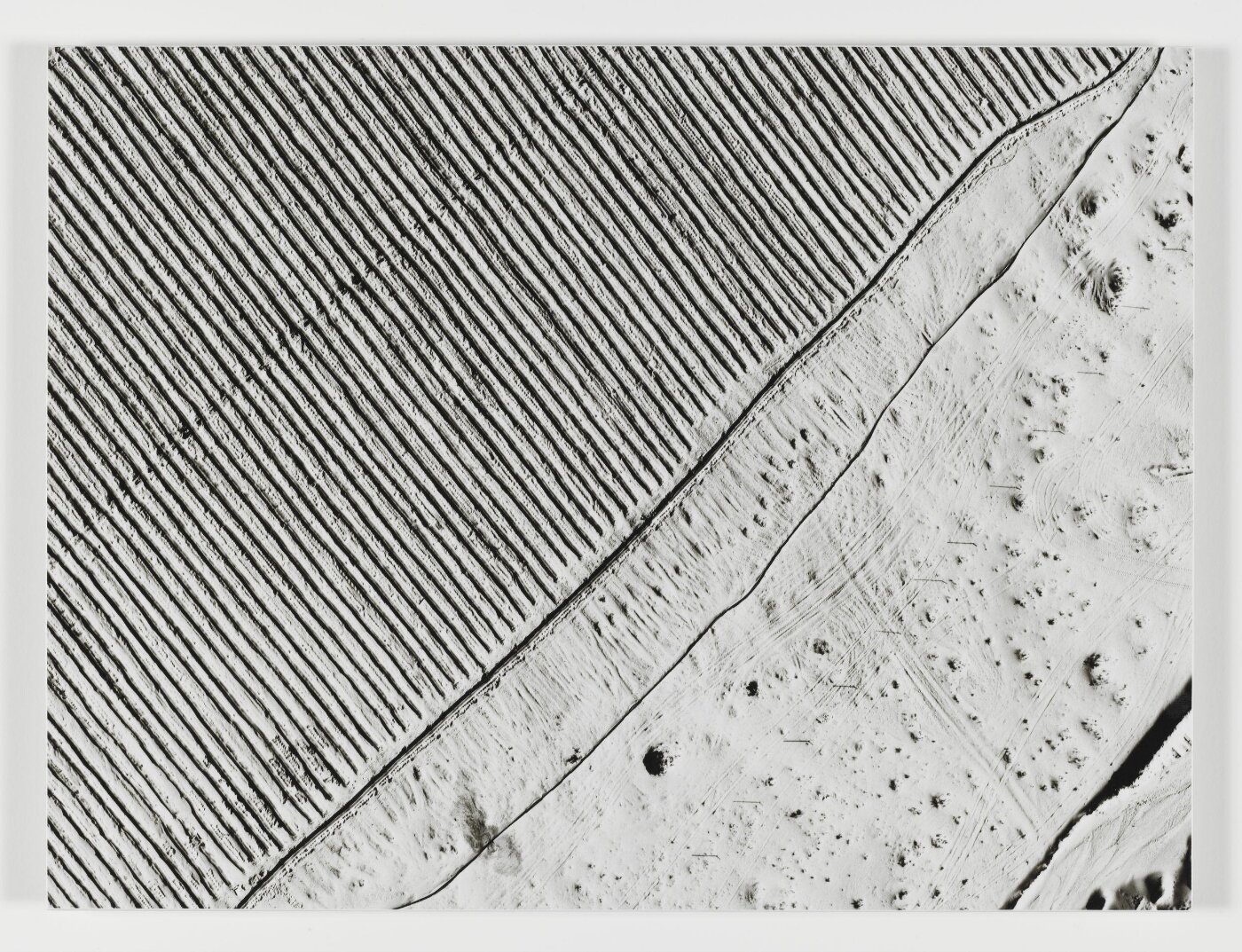Continued Resonance: Photography in the V&A’s Collection
Commissioned by Tribe Magazine in 2020.

Three series from the V&A’s collection of Middle Eastern photography, collected in the early 2010s, are considered afresh in light of the present.
For her Shadow Sites series (2011) Jananne Al-Ani photographed Jordan’s landscape from the air at dawn. The early light’s low shadows reveal the presence of ancient archaeological sites, industrial farm buildings, and contemporary military infrastructure— forms that recede to invisibility in the glare of the full sun.
Aloof though they are, Al-Ani’s images carry political charge. They challenge assumptions of the desert as barren and lifeless. The perceived emptiness of Middle Eastern landscape has been encouraged by the Western film industry, which sets sci-fi and military epics in the desert, a space threatening, alien, and ripe for discovery. Such associations are supported by colonial rhetoric: Zionism in Palestine claimed a ‘land without people, for a people without land.’
Today, Al-Ani’s crisp black and white aerial images recall the aesthetics of surveillance and military speculation. In 2020 a bird’s eye view feels a long way from natural flight, more reminiscent of a sniper plane or unmanned drone, infra-red footage of the kind played on the news.
By contrast, Nermine Hammam’s Upekkha series makes tender the human face of military action. Hammam describes seeing the army arrive in Tahrir Square during Egypt’s January revolution in 2011, and the tension that preceded them. “But as the hatches opened...what emerged [were]...wide-eyed youths with tiny frames, squinting at the cacophony of Cairo.”1 Uniformed soldiers stand in moments of repose and vulnerability; their fatigues are saturated in pastel, edited to match the placeless backdrops against which they are pasted: mountainous, white-capped, and floral.
Nine years on from the beginning of the revolution, as Sisi leads a brutal military regime in Egypt, the romance of these images feels remote, a little ill-fitting. They still critique the masculine imaginary on which military power relies, and call attention to the performative while sympathising with its lived reality. But green-screened sunsets take us a long way from Cairo, and the early days of revolution.
In Joana Hadjithomas and Khalil Joreige’s Wonder Beirut, idyllic images of a different kind break down under the pressure of the present. Tourist sites and happy water-skiers, clustered on postcards of pre- civil war Lebanon, are here burned and swollen, their negatives stained with oily fingerprints. The works collapse the clichéd image of Lebanon’s ‘Golden Age’ of liberal values and Riviera sunshine, a myth that has long obscured the realities of inequality and sectarianism of Lebanon’s 1950s and 1960s.
As Lebanon enters its six month of civic action against its crippling political system, Wonder Beirut #14, The Statue of Riad Solh resonates loudest. Riad Solh square is the locus of the revolution that began in October 2019, in Beirut’s relentlessly gentrified Downtown, where high- security government facilities rub shoulders with max-luxe shopping. It is satisfying to see facsimiles of this space blister and crackle, nostalgia buckle under an unseen force, heat-cracked and acid-pocked, as these empty, elite streets fill again with people.
1 See https://www.nerminehammam.com/ upekkha.html

